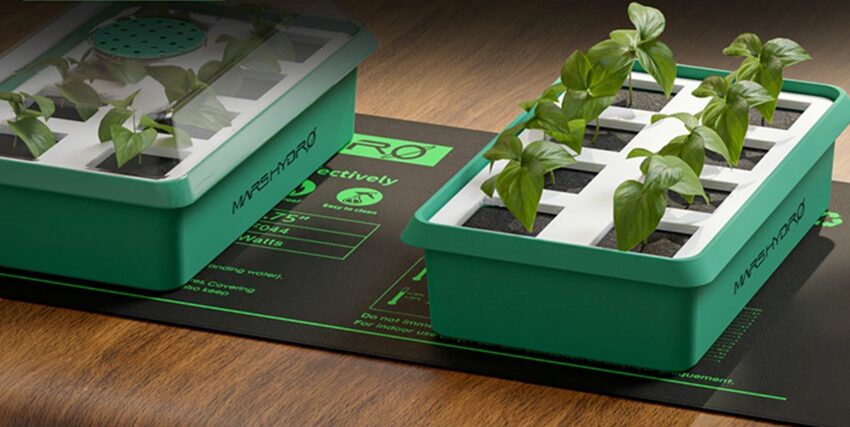How to Supercharge Germination Using Seedling Heat Mats and Grow Lights?

Seedling heat mats are essential tools for gardeners looking to boost germination rates and promote healthy seedling growth. These mats provide consistent, gentle warmth to the soil, mimicking the ideal conditions seeds need to sprout. By maintaining an optimal temperature range of 70-85°F (21-29°C), heat mats ensure faster and more uniform germination. They are especially beneficial in cooler climates or during early spring when natural soil temperatures may be too low. Easy to use, simply place the mat under your seed trays, plug it in, and watch your seedlings thrive.
Concept of grow lights and how efficient they are in indoor gardening
LED grow lights are innovative lighting solutions designed to support plant growth indoors. They emit specific wavelengths of light that plants need for photosynthesis, ensuring optimal growth and development. Unlike traditional lighting, LEDs are energy-efficient, produce less heat, and have a longer lifespan. They can be tailored to provide the exact light spectrum required for different stages of plant growth, from germination to flowering. This precision helps maximize yield and quality while minimizing energy costs. Ideal for greenhouses, and hydroponic systems, led grow lights for indoor plants are revolutionizing modern horticulture.
A Perfect combo
Seedling heat mats and LED grow lights work together to supercharge the germination process by creating optimal growing conditions. Heat mats provide consistent warmth, maintaining soil temperatures between 70-85°F (21-29°C), which accelerates seed sprouting. Meanwhile, LED grow lights emit specific wavelengths of light essential for photosynthesis, ensuring robust seedling development. This combination enhances germination rates, promotes uniform growth, and supports healthy seedlings even in cooler climates or low-light conditions. Together, they create a controlled environment that maximizes efficiency and boosts overall plant health.
Types of seeds flourish under the setup of grow lights over heat mats
Vegetable Seeds: Many vegetable seeds, such as tomatoes, peppers, and cucumbers, thrive with the consistent warmth provided by seedling heat mats and the targeted light spectrum from LED grow lights. This combination ensures rapid germination and robust early growth, setting the stage for a bountiful harvest.
Herb Seeds: Herbs like basil, cilantro, and parsley benefit greatly from the controlled environment created by heat mats and LED grow lights. The steady warmth and optimal light conditions promote faster sprouting and healthier seedlings, making it easier to cultivate flavorful herbs indoors.
Mars Hydro offers top-quality grow lights and seedling heat mats, perfect for creating an optimal indoor garden. Their LED grow lights emit specific wavelengths of light essential for photosynthesis, ensuring robust plant growth from germination to flowering. Paired with their seedling heat mats, which provide consistent warmth to maintain ideal soil temperatures, Mars Hydro’s products significantly boost germination rates and promote healthy seedlings. These tools are energy-efficient, durable, and designed to maximize yield and quality while minimizing energy costs, making them ideal for indoor gardening enthusiasts.
Conclusion
In conclusion, heat mats for plants and grow lights are invaluable tools for gardeners aiming to supercharge the germination process and ensure healthy seedling development. By providing consistent warmth and optimal light conditions, these devices create an ideal environment that promotes faster and more uniform growth. Whether cultivating vegetables or herbs, the combination of heat mats and grow lights significantly enhances germination rates and overall plant health. Products from companies like Mars Hydro offer energy-efficient, durable solutions that maximize yield and quality while minimizing costs, making them perfect for any indoor gardening enthusiast.